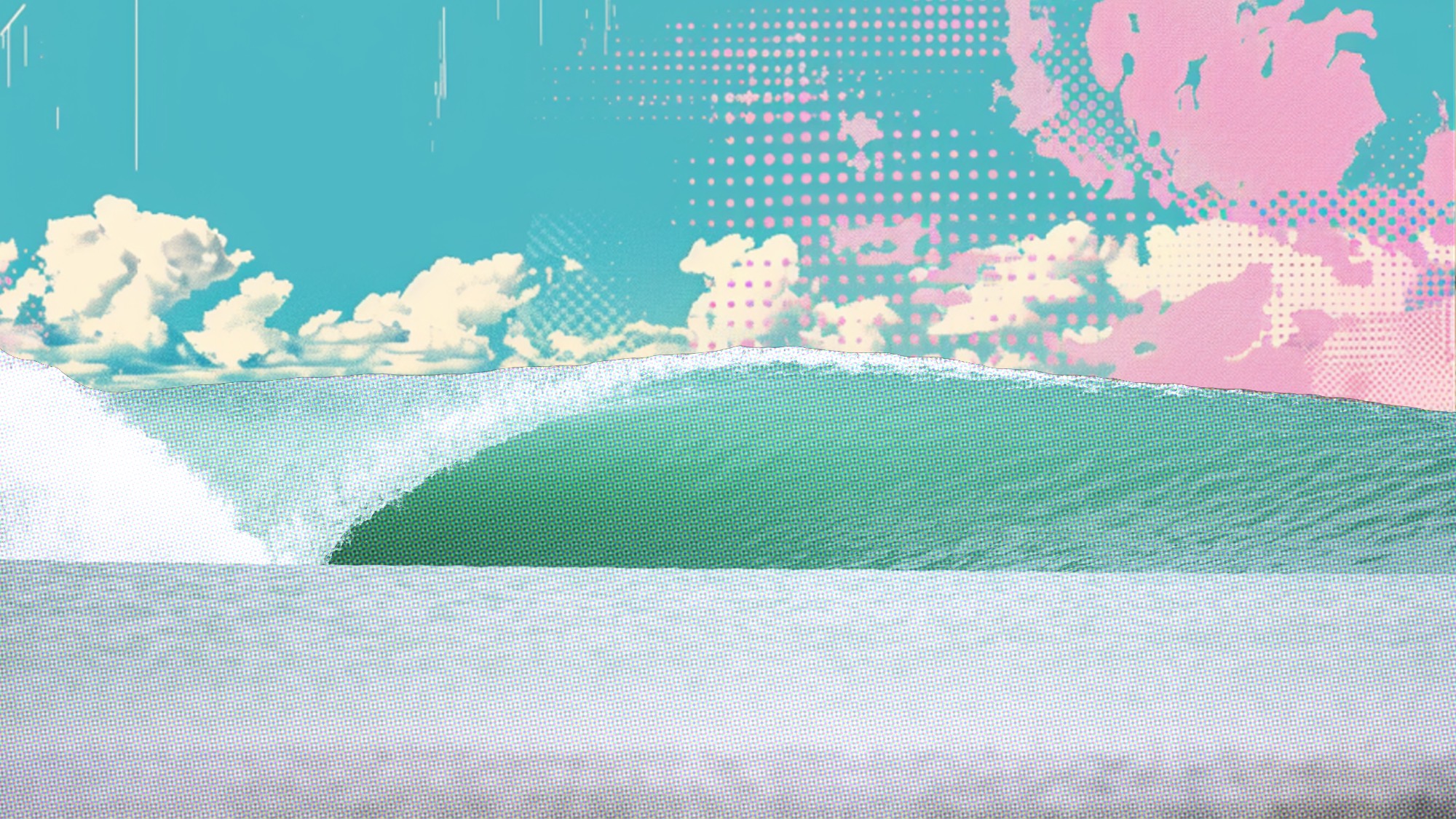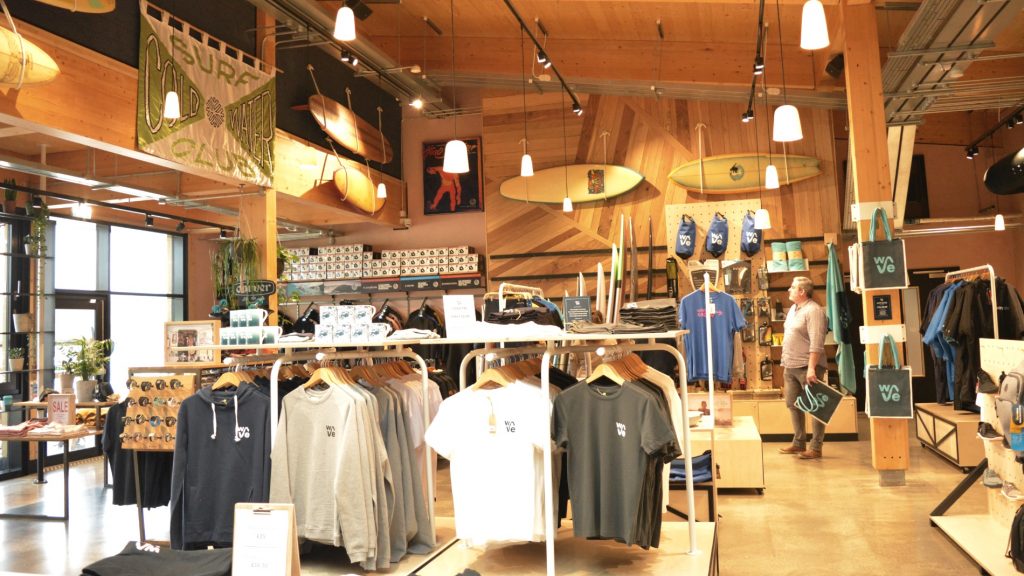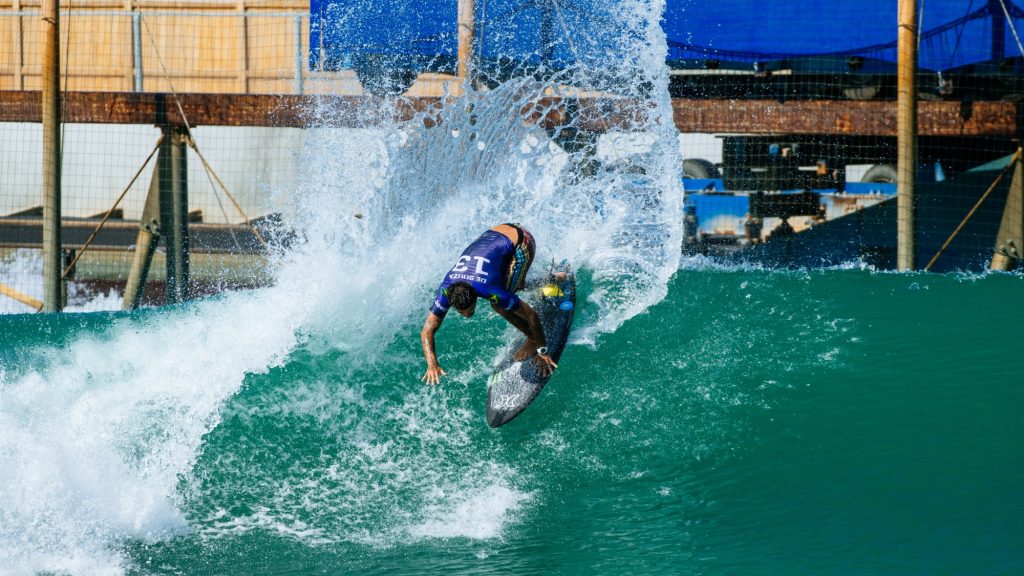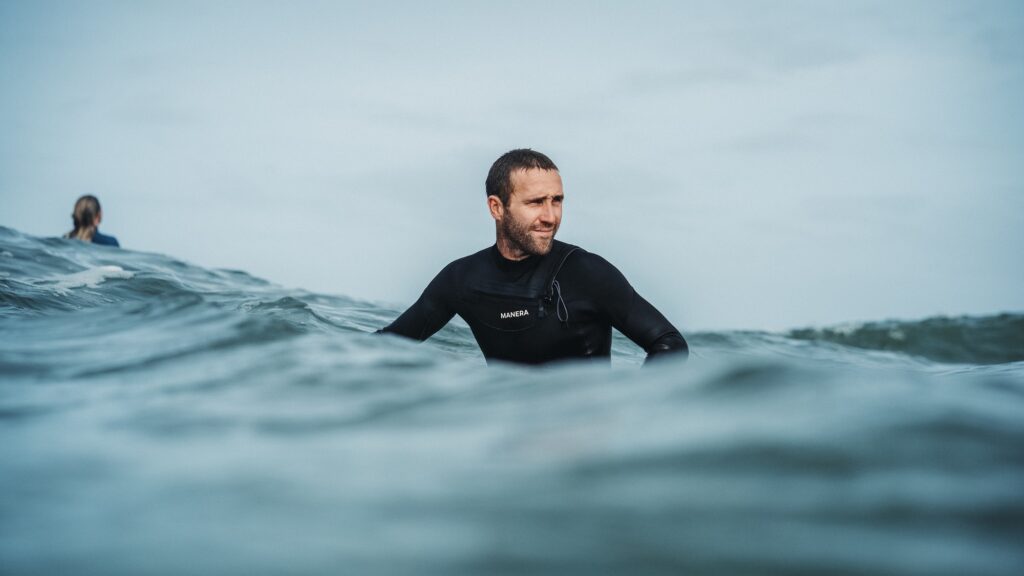Convo Time: How wave pools will shape everything from the WSL to the surf industry

Brendan Buckley, or just “Buck,” spent years in the marketing department at Quiksilver before moving to the editor’s desk at Stab. His perspective is unique because, whereas editorial and marketing are typically two separate entities, Buck is a professor of both. We spoke with him to gain surf endemic insight on those places where wave pools intersect with surf brands, the WSL, surfing progression, and ultimately, the changing culture. How will wave pools transform established revenue and content creation models within the surf industry and the digital media it consumes? Let’s dig in.
Along with their snow and skate events, Swatch recently added a surf event in Waco. Do you think maybe that has to do with it being in a wave pool rather than the ocean?
Yeah, I would think so. I mean, I think they could be “on time” that way. It’s when the waves are going to be there. So I think there are a lot of opportunities for surf brands working with wave pools. While I was at Quiksilver, Alaia Bay was opening up. And so I know that partnership was a big focus there. And it’s something everybody was really excited about. I do think there are a ton of opportunities. I think the most obvious parallel is just looking at mountains. When you go to a mountain town, you see the shops right there. I mean, you know that nearby people are about to go and do that activity and use specific gear. So you could be pretty sure that it’s a good place to sell them stuff. If you’re in the business of selling things to surfers, wave pools will seem like a great place to do that.

Do you think wave pool surfing is as watchable when compared to the ocean? If something pool-related comes across your inbox at STAB, how do you approach it?
I think anytime a new, especially new pool technology comes out, that’s almost immediate interest from our entire audience. People want to see the new ways people are creating waves. In terms of surfing, I think there is still this sense of something doesn’t count all the way until you can do that maneuver in the ocean. Say you don’t really have airs that figured out and then you go and land airs in the pool, people aren’t going to be necessarily as impressed until they start seeing you do those same airs in the ocean. Wave pools make sense as the perfect training ground. And for events, pools are incredible. We recently did an article at STAB where these people looked at an entire year of CT surfing and learned that the amount of time people spent riding waves was minimal. During a CT heat, I think it’s something like 3%, maybe even less, that surfers are up and riding. And so if you watch an hour of surfing, the math just isn’t really good. And then they also learned through that the average score of a wave in the CT comp is right around a two or three. And so when you’re asking for eight hours of somebody’s time to tune in, surfing has these really long waits between waves and so many waves really aren’t going to impress you that much because they’re scored as a two or a three. What pools offer is just the complete opposite. I mean, you know something special is going to happen. You know that you could also sit there at whether it’s 12 or 2 or 6, whenever the event goes off, you’re promised action. You’re promised something that’s going to be entertaining. So I think that side of it’s huge. And then content, yeah, I think new stuff is always going to be interesting, whether it’s a new trick or a new pool technology.

What about the CT event in Lemoore, if you read the comments it’s the most hated event on tour.
I’m not a big fan of the pool event as a CT. Um, definitely not my favorite event on tour. And I think that’s just across the board. What we see at least at STAB and in the comments and everything, the people don’t seem to love it. I do think there’s a side of that though, where there was one year, I think it was Gabe and Felipe in a final and it was like, you know, they had an interesting format for the finals and trading waves. It was exciting and nobody would not watch that, right? You are one hundred percent going to watch that. But other comps, you’re just going to watch people do a bunch of turns, and a few airs and I never really got the sense of it being boring or repetitive because it’s interesting to even see what somebody’s going to try and to see how they’re going to respond to pressure and for me it’s interesting. Kelly’s pool is quite long, whereas an air, it’s one big, quick moment. So I think it’s much better for the modern attention span I believe.
So, Kelly’s wave is too long for a competition?
I guess you never really know when criticism is going to pop its head in surfing. Surfers seem to be quite, quite critical, as I think we all know. I could see it definitely affecting the WSL. It seems like no matter what the WSL does, people are somehow angry at this free product that we all get to interact with.

The WSL is an easy target for trash comments, what about the surf brands?
When it comes to a brand, I couldn’t really imagine a world where surfers get mad at a brand for being involved with a wave pool. It’s just like, you’d have to really try. I think at that point, you’d have to just like really do some mental gymnastics, really, I don’t know, meditate maybe to get that anger flowing through your body to be mad at a surf brand for getting involved with a wave pool. I don’t know how people do it. Just biochemically register anger.
How do you think wave pools will change surfing – do you see it either enhancing or detracting from surfing? Are they creating something of value for viewers, for brands?
I think there’s no doubt that pools are helping with performance, especially with younger people who are trying to figure out airs. It might not be a clip that everybody’s going to watch, but it’s no secret that it’s helping. I think an interesting thing happened when surfing became an Olympic sport because now all of a sudden these surf federations get some money from the government. And so a lot of them are spending that on doing trips to wave pools. I know a bunch of the European federations have to go and book out pools in the U.S., especially if they want air-sections because they don’t have anything here in Europe. The governing bodies that funnel surfers into the Olympics are taking young kids and training them for airs and no doubt it’s having an effect on that level and then by extension it goes into the media. I think it’ll absolutely play a role in events. Like we were talking about before, it just gives you the ability to say, ‘Hey, this is exactly what’s going to happen exactly at this time.’ It’s not, ‘Hey, show up this day and maybe it’s on, maybe it’s off.’ And even if it is on, you might not see any good waves. You might watch three good waves the entire 10 hours. You might watch one good heat, you know? So I think it’s going to affect events and then content. So I think it’s going to play a huge role in many different areas of surfing, moving forward in a very positive way.
Related Coverage
